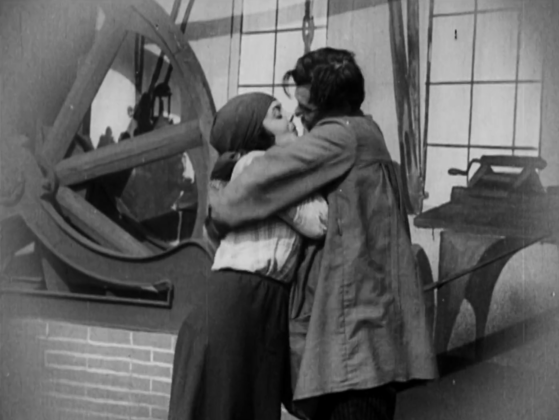+ FOUND +

Blown Up Days (1930)
1930, Odesa Film Studio Ukrainfilm, 6 parts / 1,640 m
The year 1929. A “shock worker” from a tractor plant visits a film studio premises and is furious to see fake stage designs for a kitsch production about a Soviet life. He refuses to help the crew with his tractor, but is happy to ask one of the cameramen to go with him to visit an actual Soviet village. There they witness the birth of the kolkhoz and the dekulakization of wealthy villagers. Then they are transported to the future, to the year 1932, when the first five-year plan is done and the commune-sovkhoz is established. Movies can move faster than time, but the pace of change in Soviet society is even faster than that.
Interviewed by “Kino” magazine in 1930, Oleksandr Soloviov stated: “Our movie touches on all the principal subjects discussed at the November plenum of the Central Committee of the Communist Party of the Soviet Union, such as village-city relations, city’s guiding role in collectivization of rural areas, and the lack of personnel.” Under those formal phrases hides the hilarious satirical farce told in avant-garde movie language, although it, in fact, satirizes the VUFKU avant-garde.
The joke becomes less funny when put in context. Semen Svashenko’s character is a member of “Fellowship of Friends of Soviet Cinema” — an actual “proletarian activist” organisation which played its part in the discrediting and closing down of VUFKU. Still, while making fun of Stabovyi, Vertov/Kaufman and Dovzhenko, Solovios simultaneously pays tribute to the era of artistic freedom which was coming to its end. Soloviov’s friendly critique sees Vertov’s cinema as too idealistic (Soviet life is larger than its reflection in cine-eye), and Dovzhenko’s as too epic (in “Blown Up Days”, kulaks are too wretched to dare execute an “Earth”-style murder). Humorous approach to depicting the village and factory life in the prologue, in fact, unconsciously predicts trends of later-era Stalinist cinema.
In the movie, the entrance gate of the Odesa film factory, where all of the indoors scenes were shot, can be seen. The outdoors scenes were filmed all over Eastern Ukraine and Southern Russia (Kuban): at Kharkiv factories, in Ukrainian villages and in the 240 ha-sovkhoz “Gigant” in Rostov region, the latter representing the future after the five-year plan.
The shooting began in February 1930 and finished in August 1930. Premiere took place on 03.11.1930. The film is stored at the Russian Gosfilmofond.